2 min read
What is Google Search Generative Experience? (SGE)
What is Google SGE? Think of Google SGE as your helpful buddy on the search results page. Instead of making you click on different websites, it pulls...
April was a month full of big changes and new features in the world of SEO and PPC. With the majority of the world still in lockdown, Google has features to be introduced this month and throughout the remainder of the year. We have compiled and analysed all the top search updates and the trending news from the past month to better understood how it will affect the search landscape.
When the featured snippet feature was first introduced, the position it held counted as “position 0” as it was above the first organic search result. However, the featured snippet has recently gone through big changes, with the deduplication update last month and studies revealing that featured snippet may not appear in the top organic position anymore.
Several examples have shown that there is a new type of featured snippet, one which can appear much lower in the SERP. Examples of this happening can be seen below:

These examples show how even if you hold the featured snippet for a search term, this may not have the same impact as it did previously. However, according to research done by Search Engine Land, it is a rare occurrence for featured snippets to appear lower in the SERP.
They analysed the number of Wikipedia’s featured snippets that are showing up lower on the SERP and they found that this makes up for less than 1% of their total featured snippets. Their research also found that these types of featured snippets are unlikely to appear when the search term is a question and therefore a lower placement can still attract users as they’re more likely to be evaluating all the results.
There are different ways to generate structured data using JavaScript. The most common methods are Google Tag Manager, which allows you to manage tags on your website without having to edit the code, and custom JavaScript. So, to help you generate structured data using these two methods, Google provided some advice on steps to ensure you have effective structured data.
How to Generate Structured Data with Custom JavaScript
According to Google, you can use custom JavaScript to generate all of our structured data or use it to add more information to the server-side rendered structured data.
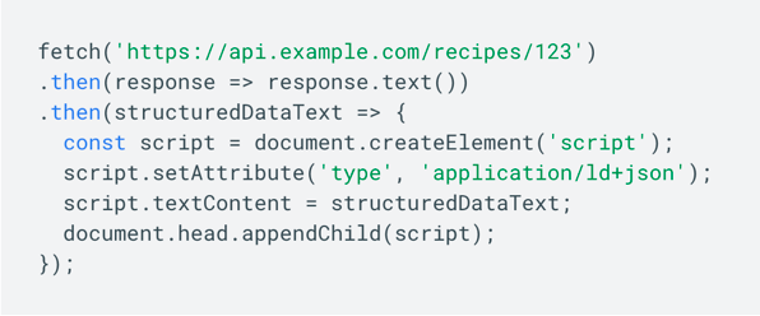
Google announced in February that companies who wish to be on their Google Partners Programs will have to adhere to their new, updated requirements. However, this has been delayed until 2021 due to Coronavirus. Google felt that it would be unfair to ask businesses to match their higher requirements through these difficult times and will wait till 2021 to make these changes.
As the circumstances around COVID-19 continue to evolve, we understand this is a difficult time for you, your families, and your business. In light of this, we’ve decided to postpone the launch of the new Google Partners program until 2021. Learn more: https://t.co/SlcIwaWTx7 pic.twitter.com/r80TzBnR8R
— Google Ads (@GoogleAds) April 8, 2020
The new requirements for the Google Partners Program, which will now be introduced in 2021, included:
To learn more about their new partner’s program requirements, read our search updates blog from February when these new changes were announced.
As these new requirements will no longer be enforced until 2021, the current partners will retain their status and specialisation badges. If an agency is looking to earn their partner status in 2020, then they can still do so by meeting the current requirements.
Google’s new assistant “Duplex” has the capabilities to call businesses and make appointments and bookings for the user. After completing beta trails in the U.S., Duplex has now launched in the UK and has already started appearing in some Google My Business Accounts.
Customers who find your GMB profile through a Google search, Maps or Duplex can ask the assistant to call you on their behalf, for tasks like booking an appointment and making reservations. To enable Duplex calls, you will have to enable the “Accept Google Assistant Calls” option when you edit your business information.
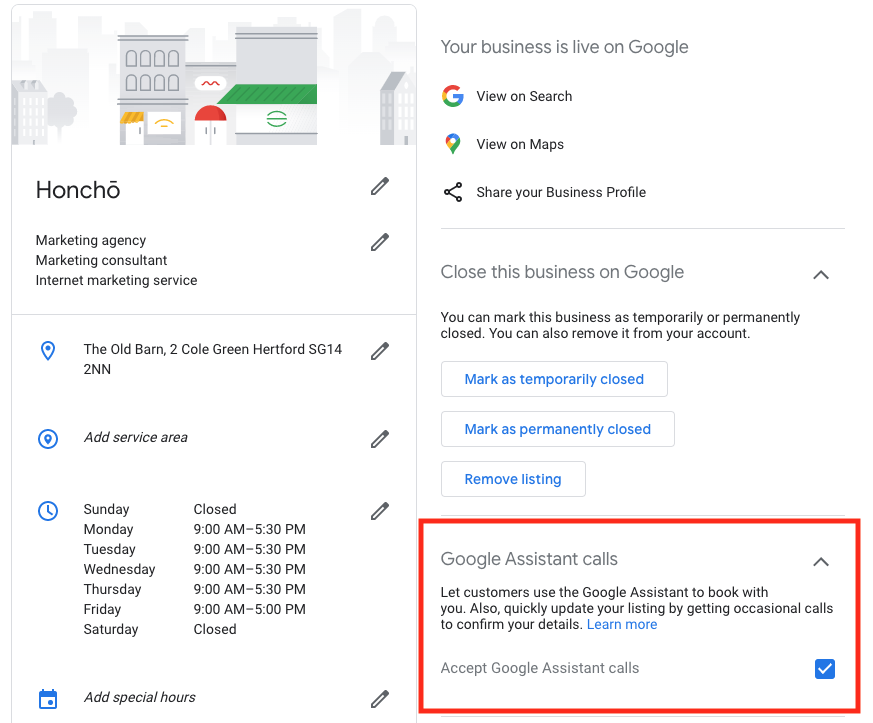
Before calling the business, the assistant will confirm the specific details with the user such as the preferred times, number of people going etc. Once confirmed, the assistant will try to book an appointment using an online booking partner, if possible, or by calling your business using Duplex, the automated voice-calling technology. Google may occasionally call the business to confirm their details such as their opening hours to ensure that they have accurate information.

Google announced in March that they will be providing Google Ads credit to SMEs as part of their commitment to helping businesses during the Coronavirus pandemic. They have now provided more information as to who will be eligible for the credit and how it will work.
We’re committing $800M+ in new #COVID19 response efforts, incl $340M in @GoogleAds credits for SMBs worldwide, $250M in ad grants for @WHO & 100+ govt orgs globally, a $200M investment fund for NGOs & banks to help small businesses access capital, and more https://t.co/oVj6MMs9Bl
— Sundar Pichai (@sundarpichai) March 27, 2020
Google has already identified the small or medium advertisers that use Google Ads, and these will be the advertisers that are classed as an SME. The main requirement for being eligible for receiving the credit is that the advertiser must have spent on Google Ads in 10 out of the 12 months in 2019 AND in either January or February of 2020, if not both.
So, if you haven’t spent any money on Google Ads in 2020, you will not be eligible for the credit. For manager level accounts; if there is one manager-level account which has accounts rolling up to it, the credits are distributed per eligible account and not at the manager level.
Each eligible advertiser gets one credit, with the actual amount dependent on historic ad spend, as well as country and currency. Google will start rolling out the credits in phases from May 2020 and if you qualify, they will start appearing automatically. Advertisers will be able to use the credit on any channel (Search, Display or YouTube) up until December 31st, 2020.
On the 21st of April, Google made a major announcement regarding its Google Shopping platform. They announced that Google Shopping will no longer be exclusively for paying merchants and that retailers will be able to list on Google Shopping for completely free! Google stated that these changes are expected to be rolled out across the U.S. before the end of April and globally before the end of 2020.
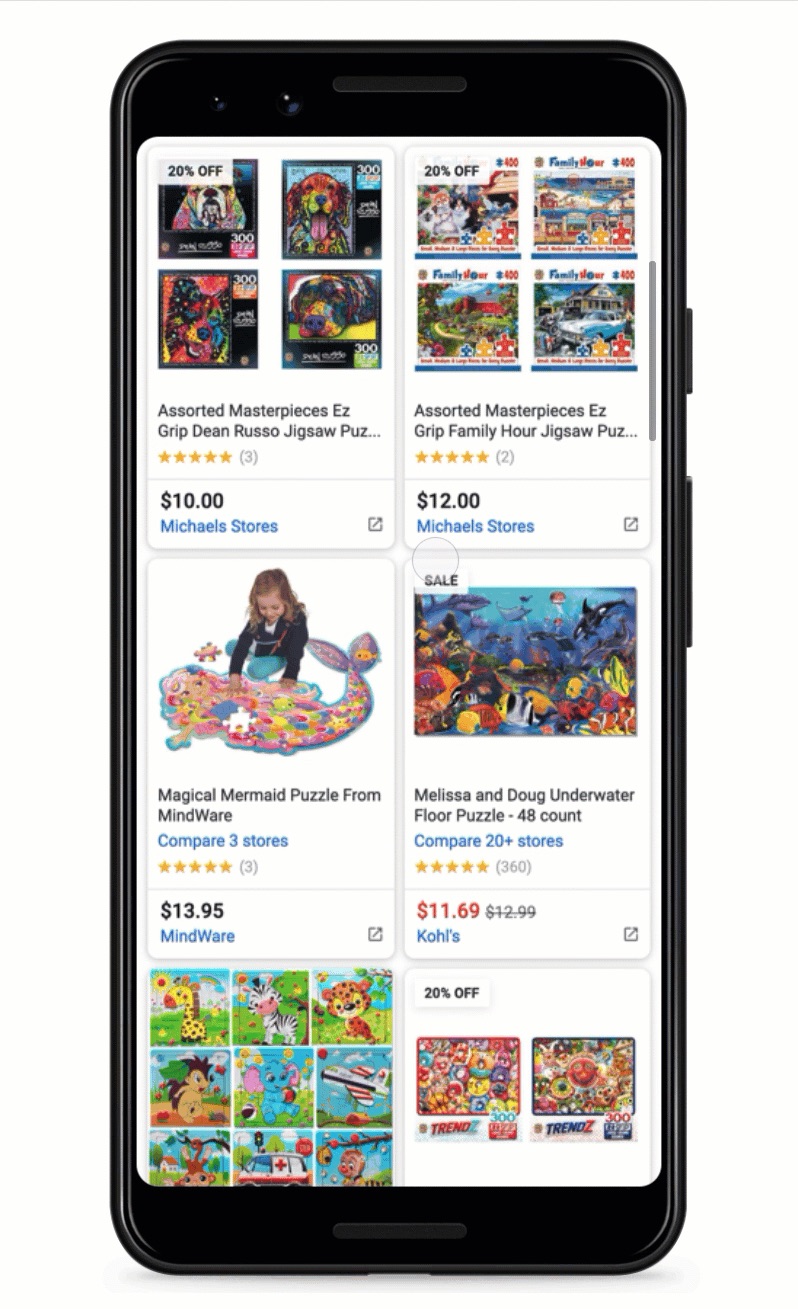
The Coronavirus Pandemic – Google stated that this plan has already been in the works for some time and is part of their long-term goal, but it was accelerated due to the Coronavirus. Google wants to help businesses by offering free exposure for those who can to still meet customer demands during these difficult times.
Increased Choice to Users – Due to only paying retailers being on Google Shopping, it led to a lack of choice and a limited number of sellers on the platform. A limited choice can lead to a poor experience for the customer.
Competition to Amazon – By increasing the available choices on Google Shopping, Google is providing direct competition to the leader of online marketplaces: Amazon. Google has stated their desires to increase market share in online commerce and said they’re looking to expand and improve the Google Shopping platform.
For retailers who are currently not on Google Shopping due to financial restrictions, this presents a great opportunity to dramatically increase exposure. This can open up a whole new channel of traffic and revenue for smaller retailers, competing against big brands without having to pay.
However, paid ads will still appear at the top and bottom of Shopping tab, with sponsored ads also still appearing at the top of the search result page. Merchants already listed on Google Shopping can use this budget for more paid ads and sponsored listings, working in combination with the organic results, much like how PPC and SEO work together to create a strong digital presence.
To be eligible for organic listing, sellers must opt-in to “surfaces across Google” and upload their product feed to the Google Merchant Centre. You should ensure you’re well prepared for this change to gain the full benefits. The measures you can take include:
For more detail, read our blog post on Google Shopping’s free update to learn more about this major change.
Call only ads display just a phone number, making it easier for customers to contact you. However, Google has added a section for businesses to add their website along with their numbers this ad type. This new feature, which is now simply called “Call Ads”, will just be an option for businesses to choose and not mandatory.
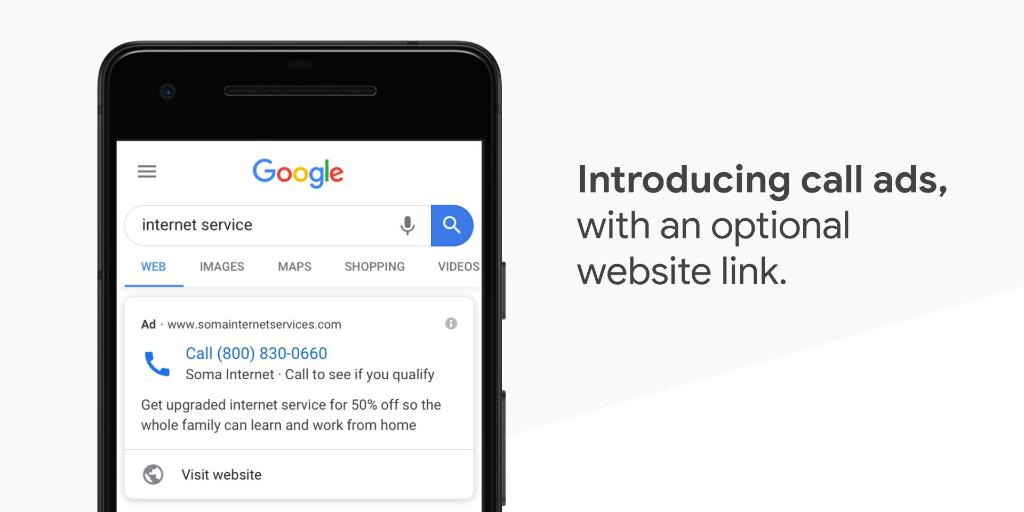
Google initially added this feature so that customers would be more encouraged to call businesses. However, due to the recent Coronavirus, call volume has rapidly increased. This can lead to a poor experience for the customer with busy lines and being put on hold.
By adding a link to the website, this gives another way for the customers to find what they need. Google also hopes that adding the website to the number will also prevent any customers from calling the wrong business.
Although this option isn’t mandatory, it is still recommended, as this is another way to increase your presence. It also makes the ad unit slightly larger, taking up more real estate.
You can activate this option when setting up a call ad by adding your URL to the “Final URL” section. You’re also able to track any traffic with tagging and tracking templates.
Google announced on the 23rd of April that they will require documents of user identity and geographical location in order to verify advertisers. This program will start in the U.S. and roll out globally and will apply to Search, Display and YouTube ads. The requirements for advertisers include:
Advertisers will have 30 days to submit their required verification once receiving the notice. Once submitted, it will take Google 3-5 days to verify. Failure to submit the verification within the 30 days period will result in ads being stopped. Agencies who run ads for their clients will not be required to verify. However, Google Partners will be able to submit on behalf of their clients.
Under the “Why this ad?” option, users will be able to view the advertiser’s name, the country they are based in and an option to stop receiving ads from them. This gives the users more power and freedom to manage their experience with Google. This also shows how important it is to give searchers a good user experience instead of using spammy ads.
Google announced on the 23rd of April that users may see a new message which reads “It looks like there aren’t any great matches for your search” to show that there aren’t any relevant results for their query.
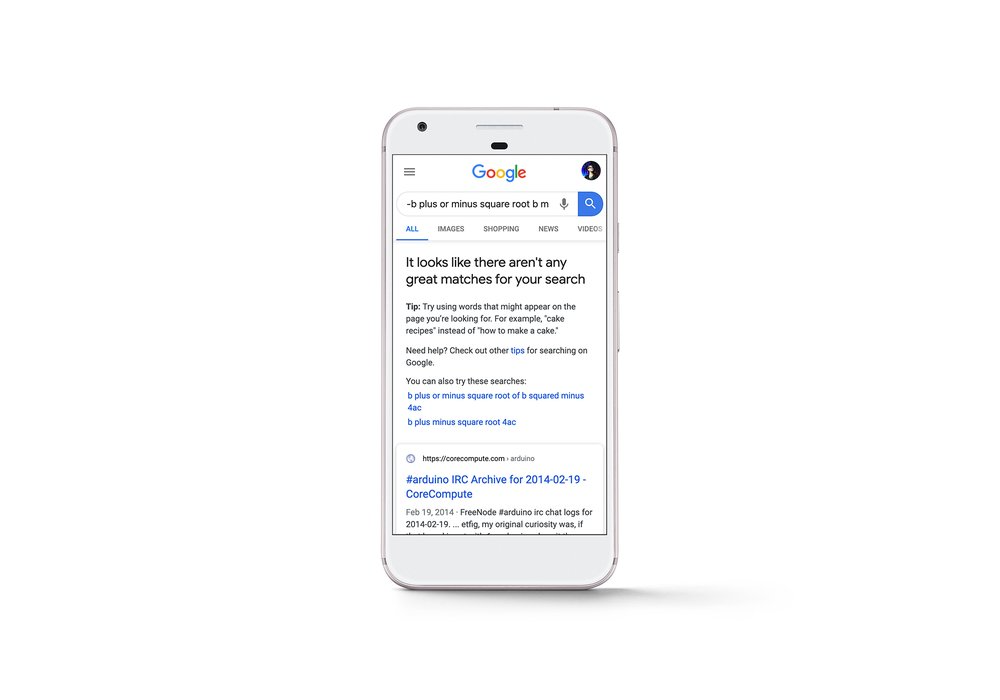
Google seeks to provide great search results for the majority of the time. But for a small portion of queries, you may see this message appear. The message will not only inform you that the results are poor but will also advise you on how to change your query to find better results. This feature will roll out in the U.S. from the 23rd of April.
While this feature is purely to help users get better search results and to improve their experience, website owners can also use it in their keyword research. If you are finding that any of your customers’ keyword phrases are showing this message, then these could lead to poor performance. This will make it more difficult for customers to find you and improving your SEO strategy for those keywords could present a great opportunity.
Google revealed in their annual report on the 23rd of April that they took down 2.7 billion ads for violating their company policies in 2019. This is an increase of 400 million removed ads from 2018 when 2.3 billion ads were taken down. The number of ad accounts that have been removed has remained relatively the same, from almost 1 million accounts in 2018 to more than 1.2 million publishers removed in 2019.
Phishing Attempts – Google highlighted that a particular type of ad that caused a lot of problem in 2019 were phishing ads that were targeting people looking to renew their passports. There have also been a crackdown “trick-to-click” ads which show misleading information.
Coronavirus Related Ads – The COVID-19 pandemic has also led to lots of Coronavirus related ads also appearing which violated Google’s ad policies. Google has already banned ads for face masks in March and they have stated that they have “blocked and removed tens of millions of ads related to the coronavirus in the past few months”.
This provides further explanation as to why Google has been tightening its requirements and verifications. It also highlights the scale of effort which is required to keep Google’s Ad system safe for users as well as the authentic advertisers that have to compete with advertisers with bad intentions.
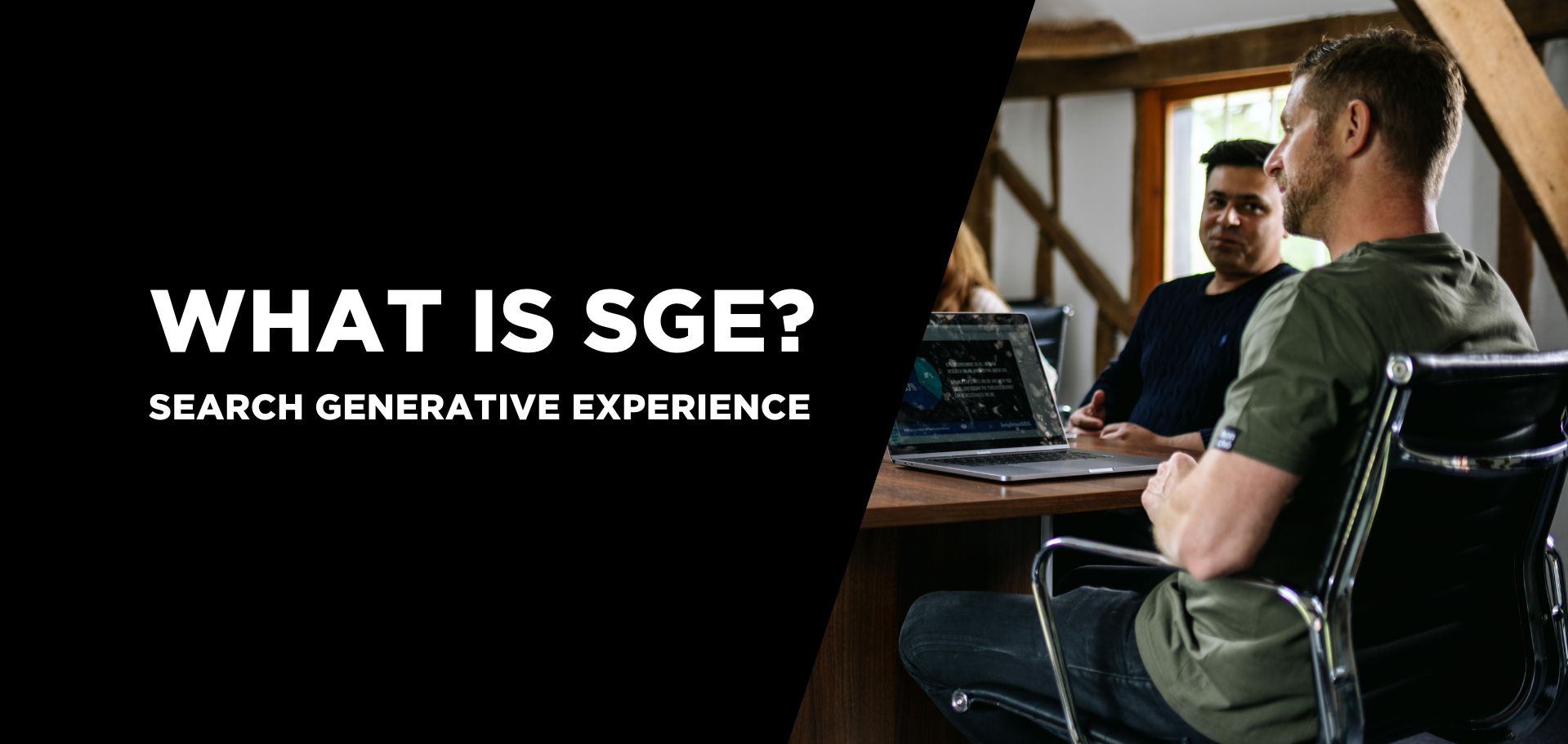
2 min read
What is Google SGE? Think of Google SGE as your helpful buddy on the search results page. Instead of making you click on different websites, it pulls...
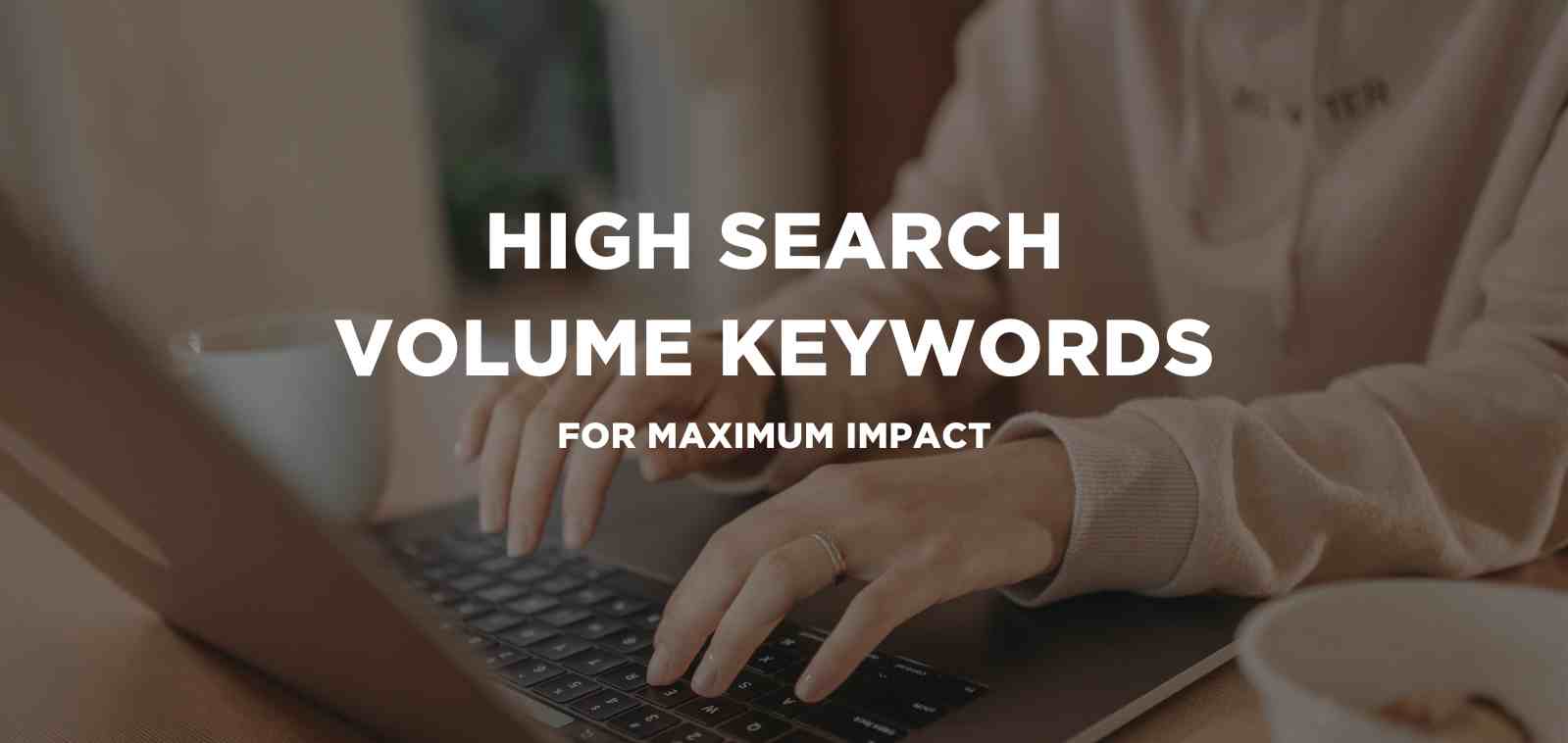
5 min read
Discover the power of high search volume keywords and how to effectively use them to boost your online presence and drive maximum impact.

2 min read
We're delighted to officially announce our partnership with Eflorist, one of the world’s leading flower delivery brands with over 54,000 local flower...
February was a busy month for SEO. With exciting new updates and features, there was a lot to learn in the past month. We’ve analysed all the top...
There were plenty of updates and new features that came about in March in the world of SEO and PPC. March also saw the outbreak of Coronavirus which...
With many updates and changes happening to the digital landscape in August, we’ve wrapped up some of the key changes below across SEO, PPC, digital...